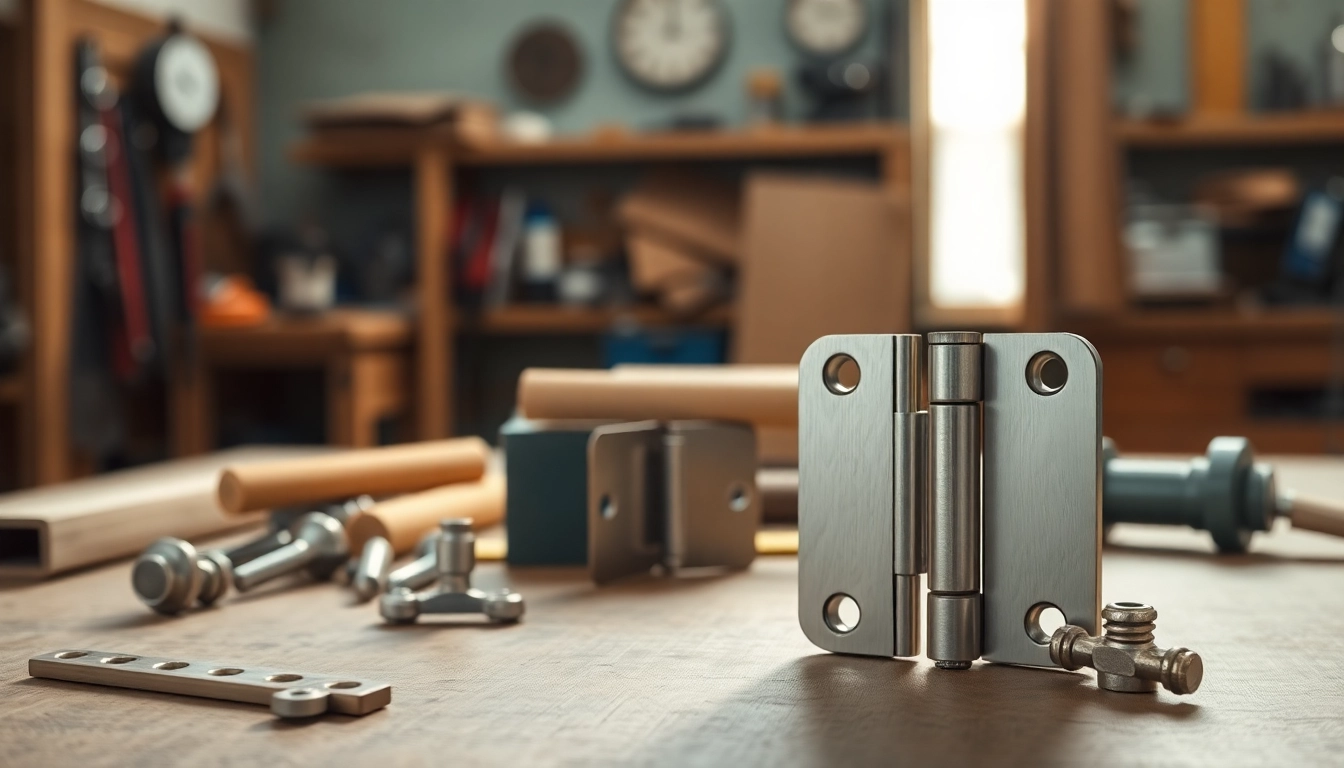
Understanding Cabinet Hinges: Types and Applications
1. Overview of Cabinet Hinges
Cabinet hinges are a vital component of any cabinetry system, whether in kitchens, bathrooms, or other areas of a home or office. They provide the necessary functionality for opening and closing cabinet doors, playing a crucial role in both aesthetics and usability. As a key product offered by Cabinet Hinge Manufacturers, these components come in a multitude of styles, sizes, and functionalities, tailored to meet the diverse needs of consumers and businesses alike.
2. Different Types of Hinges
Understanding the different types of cabinet hinges available is essential for making informed decisions when selecting hinges for specific applications. Here are some of the most common types:
- Concealed Hinges: Also known as hidden or euro hinges, these are designed to be completely hidden when the cabinet door is closed, offering a clean aesthetic.
- Overlay Hinges: Designed for cabinets where the door overlaps the cabinet box, these hinges allow for a more robust appearance.
- Inset Hinges: Useful for cabinets where the door sits flush with the cabinet frame, providing a classic look.
- Soft-Close Hinges: These innovative hinges allow doors to close quietly and slowly, preventing slamming, which is particularly beneficial in family homes.
- Spring Hinges: Featuring a built-in spring mechanism, these hinges automatically close the door after it has been opened, beneficial for high-traffic areas.
3. Applications in Residential and Commercial Furniture
Cabinet hinges are used in various applications across both residential and commercial sectors. In residential furniture, they are commonly found in kitchens, bathrooms, and living spaces, allowing for easy access to storage. In commercial settings, such as retail displays or office cabinetry, hinges are also utilized to maintain both functionality and aesthetic appeal. The choice of hinge can greatly affect the usability and visual impact of the furniture, hence the importance of understanding available options.
Key Features to Look for in Cabinet Hinge Manufacturers
1. Quality and Durability Standards
When selecting a manufacturer for cabinet hinges, quality and durability should be at the forefront of considerations. A manufacturer that adheres to stringent quality standards ensures that the hinges are not only robust but can withstand frequent use over time. Look for manufacturers who provide details about their materials, testing procedures, and compliance with industry standards.
2. Variety of Designs and Finishes
The aesthetic appeal of cabinetry can be dramatically influenced by the design of the hinges used. A manufacturer that offers a wide variety of designs and finishes—from polished chrome to matte black—can aid in achieving the desired look for your projects. This customization ability allows cabinet designers and contractors to match hinges to other hardware elements beautifully.
3. Cost-Effectiveness and Warranty Options
Price is often a crucial factor in the selection process. Opting for manufacturers that provide competitive pricing without compromising on quality allows for budget-friendly projects. Additionally, consider the warranty options provided. A solid warranty can offer peace of mind, ensuring that you are covered for manufacturing defects or failures.
The Importance of Choosing a Reliable Manufacturer
1. Reputation within the Industry
Partnering with manufacturers that have a stellar reputation in the cabinet industry can save you time and potential issues during installation. Reliable manufacturers often have a longstanding track record of delivering quality products and exceptional customer service, which can significantly enhance project outcomes.
2. Customer Testimonials and Reviews
Client testimonials and product reviews serve as vital indicators of a manufacturer’s reliability and product quality. Reviews can provide insight into the experiences of others who have already purchased and used the hinges you’re considering, shedding light on practical functionality and quality over time.
3. Innovations in Hinge Technology
In a rapidly evolving market, innovation plays a significant role in product selection. Manufacturers who invest in research and development to produce technologically advanced hinges can provide solutions that enhance performance, such as integrated soft-close mechanisms or improved durability against wear and tear.
Top Cabinet Hinge Manufacturers in the Market
1. Leading Brands Overview
The cabinet hinge market is dominated by several key manufacturers known for their outstanding product lines. Brands like Blum, Grass, and Amerock stand out for their commitment to quality and innovative designs. Each brand has specific products catering to different needs, from commercial applications to luxurious home renovations.
2. Comparison of Product Lines
When comparing product lines, consider factors such as the types of hinges available, the quality of materials used, and the types of finishes. For instance, Blum is widely recognized for its soft-close technology that enhances user experience, while Grass offers a range of concealed hinges that are celebrated for their sleek designs and reliable operation. An assessment of product catalogs will reveal unique features that may be beneficial to your projects.
3. Pricing Trends and Market Insights
Pricing trends can fluctuate based on various factors, including material costs and technological advancements. Generally, high-quality hinges from reputable manufacturers might come at a premium but tend to offer better longevity and performance. Understanding current market insights, including shifts toward eco-friendly materials, can aid in making informed purchasing decisions.
How to Collaborate with Cabinet Hinge Manufacturers Successfully
1. Defining Project Specifications Clearly
Effective collaboration with manufacturers begins with clearly defined project specifications. Before initiating contact, outline your requirements in detail, including quantities, types of hinges needed, desired finishes, and any specific functionalities such as soft close or special installation features.
2. Building Long-Term Manufacturer Relationships
Establishing long-term relationships with manufacturers can be mutually beneficial. As you continue to work together, manufacturers can offer personalized service, better pricing, and priority in production, leading to smoother project execution and potential cost savings.
3. Evaluating and Adjusting After Purchase
After receiving products, take the time to evaluate their performance during installation and use. Gather feedback from installers and end-users to assess the effectiveness of selected hinges. Should you encounter any issues, communicate directly with the manufacturer for resolution, which can often lead to further improvement in processes and products.